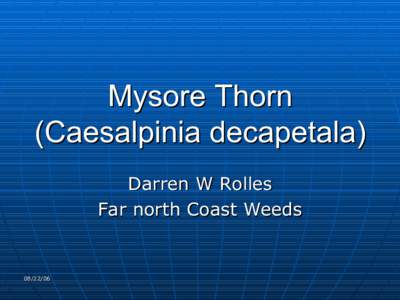 Date: 2011-10-10 10:21:34Medicinal plants Sapium Triadica sebifera Catalpa Triadica Ostrya virginiana Ostrya Amelanchier Cercis canadensis Flora of the United States Flora Ornamental trees | |  Green Gone Bad Featured Ornamental Plant: Triadica sebifera (Chinese Tallow Tree) Some exotic ornamental plants behave badly when they escape from the place they are planted. Infestations of these Green Gone Bad Featured Ornamental Plant: Triadica sebifera (Chinese Tallow Tree) Some exotic ornamental plants behave badly when they escape from the place they are planted. Infestations of these
Add to Reading ListSource URL: www.se-eppc.orgDownload Document from Source Website File Size: 182,83 KBShare Document on Facebook
|






 Green Gone Bad Featured Ornamental Plant: Triadica sebifera (Chinese Tallow Tree) Some exotic ornamental plants behave badly when they escape from the place they are planted. Infestations of these
Green Gone Bad Featured Ornamental Plant: Triadica sebifera (Chinese Tallow Tree) Some exotic ornamental plants behave badly when they escape from the place they are planted. Infestations of these